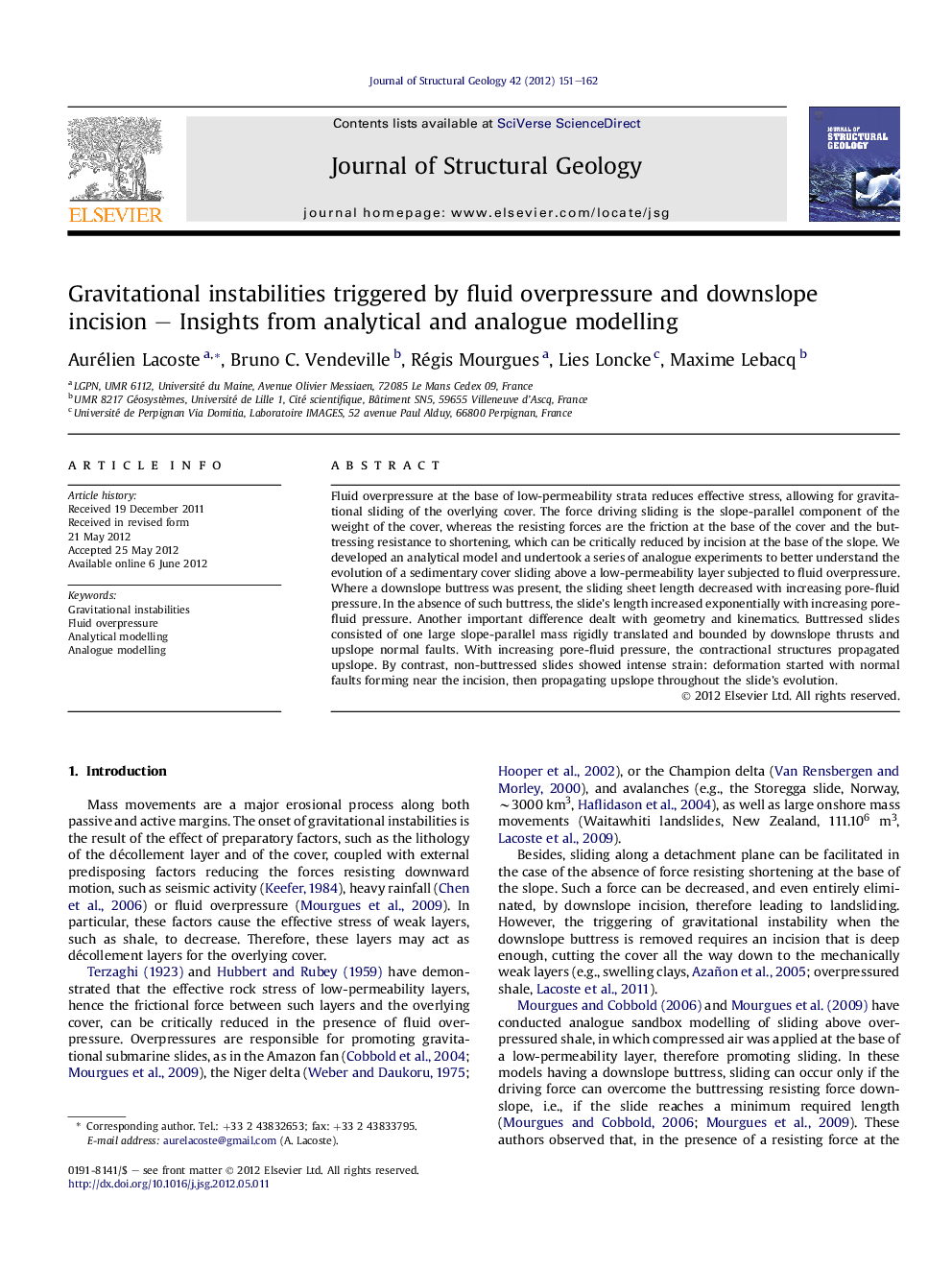| Article ID | Journal | Published Year | Pages | File Type |
|---|---|---|---|---|
| 4733412 | Journal of Structural Geology | 2012 | 12 Pages |
Fluid overpressure at the base of low-permeability strata reduces effective stress, allowing for gravitational sliding of the overlying cover. The force driving sliding is the slope-parallel component of the weight of the cover, whereas the resisting forces are the friction at the base of the cover and the buttressing resistance to shortening, which can be critically reduced by incision at the base of the slope. We developed an analytical model and undertook a series of analogue experiments to better understand the evolution of a sedimentary cover sliding above a low-permeability layer subjected to fluid overpressure. Where a downslope buttress was present, the sliding sheet length decreased with increasing pore-fluid pressure. In the absence of such buttress, the slide's length increased exponentially with increasing pore-fluid pressure. Another important difference dealt with geometry and kinematics. Buttressed slides consisted of one large slope-parallel mass rigidly translated and bounded by downslope thrusts and upslope normal faults. With increasing pore-fluid pressure, the contractional structures propagated upslope. By contrast, non-buttressed slides showed intense strain: deformation started with normal faults forming near the incision, then propagating upslope throughout the slide's evolution.
► We investigate the influence of incision and fluid overpressure on gravity sliding. ► We build a 2-D analytical model to describe the structural evolution of the system. ► We confirm the results with analogue experiments. ► In buttressed models, sliding lengths decrease with increasing pore-fluid pressure. ► In incised models, sliding lengths increase with increasing pore-fluid pressure.
